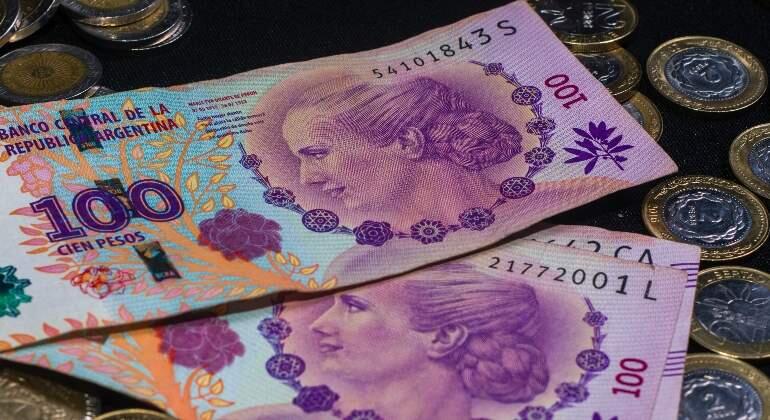
La crisis de credibilidad de la Argentina
Pablo Guidotti, profesor de la Escuela de Gobierno, describió el estado de la economía argentina.

During the presidential campaign, Joe Biden blamed President Trump’s “incompetence and neglect” for the loss of U.S. sway in Latin America. The implication was that waning American influence in the region could be reversed by a president who paid more attention to the country’s neighbors.
Good luck with that. It is true that American values of sound money, low taxes, a light regulatory touch, open markets and the rule of law are no longer in vogue in much of the region. But beyond setting a better example, it’s hard to think of U.S. actions that would make a difference. Unless Mr. Biden plans to champion an aggressive new free-trade agenda for the hemisphere—something his party isn’t known to support—his options are limited.
The trouble with the Beltway’s talk about “engagement” is that it’s all too often a euphemism for pushing development aid out the door. Worse, any new round of handouts from the bidenistas would inevitably be tied to Democratic climate claptrap.
Nowhere does this approach have worse odds of success than in Argentina, where President Alberto Fernández is running the country into the ground in traditional Argentine fashion. No amount of foreign aid can fix a country where the productive economy has been reduced to a tool to serve the interests of an all-powerful political class.
Argentines were frustrated with the failure of center-right President Mauricio Macri to deliver on promises of growth-oriented reform from 2015-19. So they returned the populist left-wing peronists to power in December 2019. Some six months later Argentina defaulted for the ninth time in its history—the third time in 18 years.
A restructuring of private creditor debt, completed in August with the help of the International Monetary Fund, mainly reduced interest payments. The deal had an exit yield of 10%.
Yet by October Argentine country risk was already more than 13.5%. Writing in the Official Monetary and Financial Institutions Forum, Argentine economist Pablo Guidotti warned the country was “on the brink, again.” Last week Argentine risk was priced at more than 13.7%.
Normally a restructuring takes some heat off public finances and renews government access to capital markets. But this hasn’t happened in Argentina because investors understand that absent reforms—to boost growth, restrain spending and stabilize the peso—the debt load is only going up.
As Mr. Guidotti explained in October, “public debt in relation to GDP is set to increase [in 2020] to around 110%, up from 98% in 2019” while “the share of public debt denominated in foreign currency remains broadly unchanged, at about 70%.” This includes $44 billion owed to the IMF that needs to be renegotiated.
On Oct. 22, members of the Ad Hoc Group of Argentina Exchange Bondholders and the Argentina Creditor Committee issued a press release to vent their frustration. They noted that they had provided “$37 billion in cash-flow relief and accepted a heavy loss of value.”
Of course, losses depend on when the bonds were purchased. But the main gripe was that creditors believed a coherent fiscal plan to recover long-run solvency would be forthcoming. No plan has materialized, which has sent bond prices plummeting. A decision to tighten capital controls in November has further undermined the government’s credibility.
With “no access to the international capital market, a small domestic capital market and financial system, and a low savings rate,” as Mr. Guidotti wrote, the outlook for 2025—when amortizations are scheduled to hit—is shaky.
A more optimistic growth outlook would help after a year in which the government imposed a draconian Covid-19 lockdown. That lockdown didn’t keep Argentina from recording one of the highest Covid deaths per capita in South America. Meanwhile gross-domestic-product is expected to be down 12% to 15% in 2020.
Argentina’s fiscal deficit for 2020 is estimated at 10% of GDP and the central bank has been making the same old mistake of printing money to finance it. The budget forecasts lower inflation next year, but inflationary expectations seem to be rising. Aldo Abram, an economist at the Buenos Aires think tank Libertad y Progreso, wrote last month that he expects inflation to be “around 50%, at least” this year as demand for pesos falls and unsustainable price controls become more “flexible.” The government is holding the official exchange-rate artificially high while in the black market the currency trades at about half that value.
High taxes disincentivize producers and savers. A 35% export tax, for example, will discourage soy farmers from shipping their grain abroad. A new wealth tax on individuals with more than $2.5 million reminds the ambitious that success is punished. Internet billionaire Marcos Galperin’s residency move to Uruguay early last year now seems prescient: one less dead canary in the coal mine.
Mr. Biden is forewarned.
Link: https://www.wsj.com/articles/argentinas-credibility-crisis-11609709871?mod=searchresults_pos3&page=1
